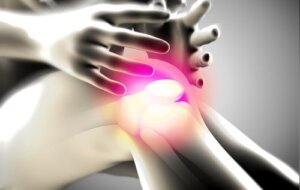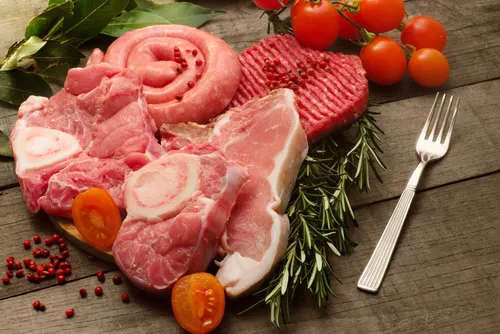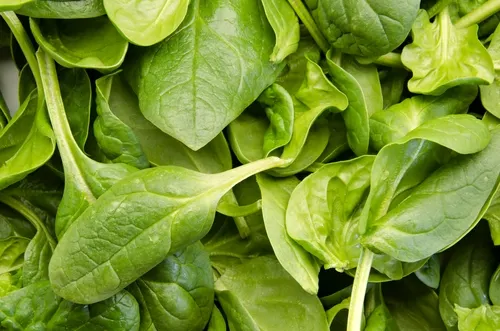A Diet to Alleviate Joint Pain


Written and verified by the doctor Maricela Jiménez López
Do you feel joint pain and do not know what to do? Your doctor is the only one qualified to tell you the treatment you should follow, and once you have them, you can also consult them about the convenience of the following nutritional tips to alleviate joint pain.
The importance of your diet to alleviate joint pain
If you’re one of the many people who that suffer from joint pain, you know how hard it is. Sometimes we have to resort to anti-inflammatory drugs, a medication that does not always give us the expected results.
Joint pain can be due to several factors, such as wear and tear, arthritis, or rheumatism. Some are diseases that are usually lifelong and to which we have to get used to.
However, we can alleviate their incidence and get a better quality of life through better lifestyle habits and proper nutrition.
Food can be essential to mitigate the pain. It’s possible to nourish the bones, cartilage, and tendons through adequate minerals to further strengthen the joints.
We must also point out that, if you’re of that lucky percentage of the population that does not yet suffer from joint pain, it would still be advisable to also follow the guidelines that we reflect now to prevent it.
A diet to reduce joint pain
Of course, food is an aspect that should be discussed with a nutritionist. Never make changes in your diet without the consent of a professional. Also, never resort to these foods as a substitute for the treatment prescribed by the doctor; in any case, they can be complements to help relieve symptoms.
1. Avoid processed foods

If you think about it for a moment, how many processed foods do you consume per week? Here would also enter the sugary soft drinks and even the juices that we sometimes buy and that are so unhealthy, mainly because of their sugar content.
Be more selective with what you eat, take a little time to do the shopping, and choose what you are going to put on your plate.
It’s advisable to reduce the consumption of refined flour, sugar, salt, and similar components that our organs do not digest well and that are harmful, causing weight gain and further damaging our joints.
2. Beware of foods with high acidity
One of the foods that we usually consume on a daily basis and that is more harmful than healthy is milk. Milk is a food of animal origin with acidifying action that alters the pH of our blood.
Milk makes the blood more acidic, and this ends up producing joint pain. Another drink with high acidity is coffee. Therefore, try not to consume it in excess.
3. Beware of excess animal protein

Animal protein raises the acid level in our body, as does milk. We know that proteins are necessary for human beings, but vegetables and vegetable proteins such as legumes or nuts can also provide us with an adequate balance. According to studies, they have only a few fewer essential amino acids than animal proteins.
If you eat animal protein, avoid red meat, or at least reduce its consumption, as indicated by specialized medical sources. Stay with chicken or turkey breast, for example, which are healthier.
We think you may also enjoy reading this article: Joint Hypermobility Syndrome: What Is It and How To Deal With It?
4. Foods that favor the supply of collagen

Collagen is essential to reinforce and restore cartilage, which helps to reduce joint pain. One way to get it is through gelatin, which as you know is rich in collagen and vitamin C, essential for the health of our cartilage.
There are foods that, being rich in sulfur, provide that element that acts as a support and reinforcement of cartilage, so ideal if you consume a week a little onion, leeks, asparagus, and brussels sprouts. Very suitable and healthy.
5. Get adequate calcium and magnesium

Two essential elements to strengthen bones and joints. Therefore, it would be advisable not to neglect taking plenty of legumes such as lentils or chickpeas.
Pumpkin seeds, chia seeds, and flaxseed are also ideal, since they’re rich in magnesium, a mineral that can also be found in all those leafy green vegetables such as lettuce, spinach, watercress, and parsley. Dried fruits and seaweed can also provide us with these minerals.
Like this article? You may also like to read: Joint Effusion: What Is It and How Can It Be Treated?
6. Foods rich in Omega-3
It may surprise you, because omega-3 is a type of fatty acid. However, it’s the healthiest and the one that, as scientifically proven, helps us to reduce inflammation and joint pain.
You can find it in salmon, or in fish such as mackerel. If you wish, you can also resort to food supplements, but always consult your doctor first.
7. To conclude: Some basic nutritional keys

First of all, try to above all maintain a balance and not overdo it. The key is to eat small amounts many times a day, without skipping meals. Reducing excess weight is also proven to be an effective relief for inflammation and joint pain.
Remember to drink plenty of water and also consume fruits and vegetables. It’s important that you cleanse your body and eliminate all those toxins.
As we said previously, joint pain is not easily resolved, but we can reduce it. Don’t be discouraged and don’t neglect your emotional health. Also, always make sure to follow the instructions given by your trusted doctor to the letter.
All cited sources were thoroughly reviewed by our team to ensure their quality, reliability, currency, and validity. The bibliography of this article was considered reliable and of academic or scientific accuracy.
- Rayman MP. Diet, nutrition and osteoarthritis. BMC Musculoskelet Disord. 2015;16(Suppl 1):S7. Published 2015 Dec 1. doi:10.1186/1471-2474-16-S1-S7
- Choi KW, Somers TJ, Babyak MA, Sikkema KJ, Blumenthal JA, Keefe FJ. The relationship between pain and eating among overweight and obese individuals with osteoarthritis: an ecological momentary study. Pain Res Manag. 2014;19(6):e159–e163. doi:10.1155/2014/598382
- Kiecolt-Glaser JK. Stress, food, and inflammation: psychoneuroimmunology and nutrition at the cutting edge. Psychosom Med. 2010;72(4):365–369. doi:10.1097/PSY.0b013e3181dbf489
- Li, S., & Micheletti, R. (2011). Role of Diet in Rheumatic Disease. Rheumatic Disease Clinics of North America. https://doi.org/10.1016/j.rdc.2010.11.006
This text is provided for informational purposes only and does not replace consultation with a professional. If in doubt, consult your specialist.








